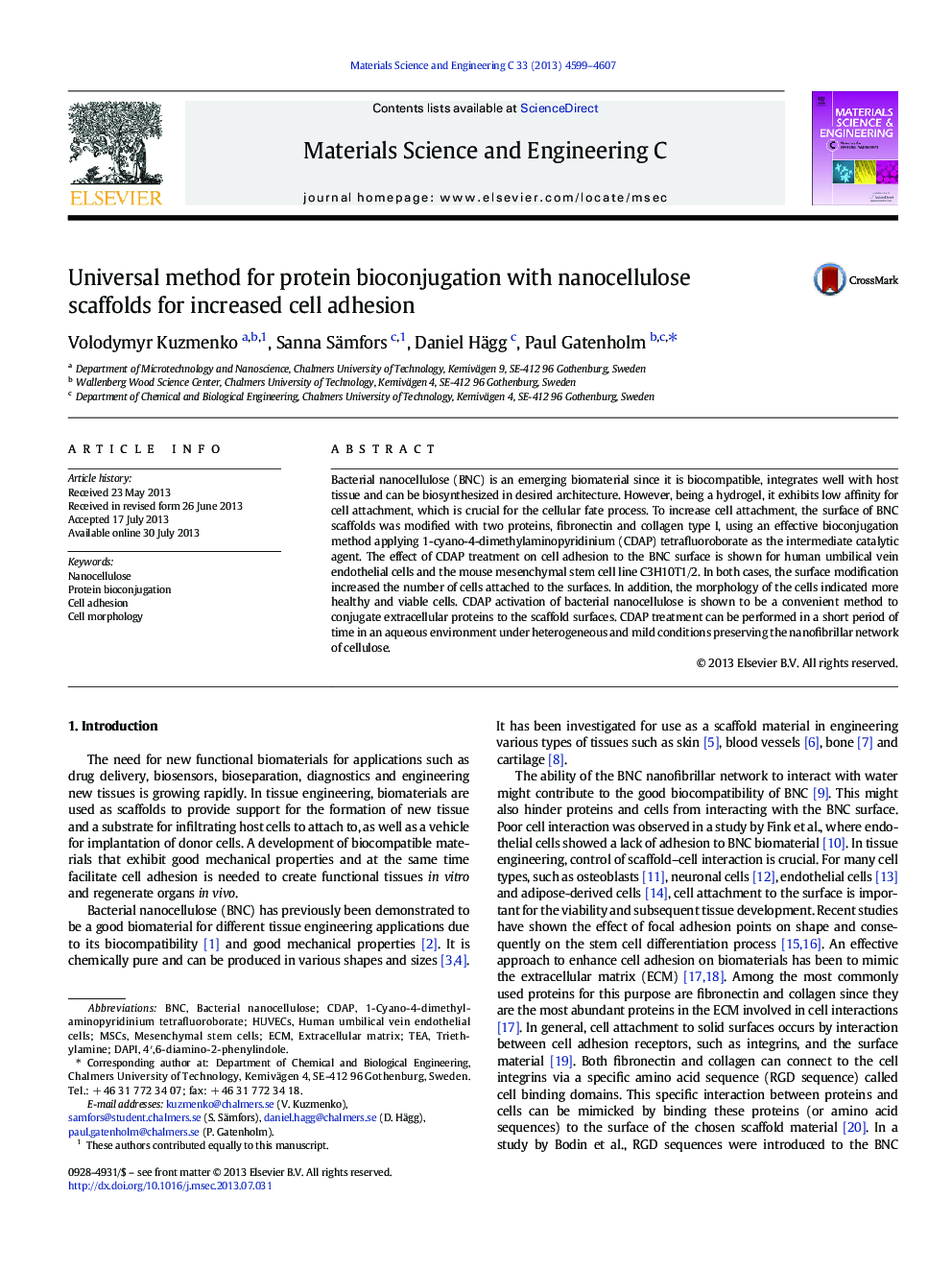| Article ID | Journal | Published Year | Pages | File Type |
|---|---|---|---|---|
| 1429480 | Materials Science and Engineering: C | 2013 | 9 Pages |
•Bacterial nanocellulose was evaluated as a scaffold material for cell culture.•To promote cell adhesion the scaffold was modified with extracellular matrix proteins.•Surface modification increased the number of cells attached to the scaffold.•The morphology of the cells indicated more healthy and viable cells.
Bacterial nanocellulose (BNC) is an emerging biomaterial since it is biocompatible, integrates well with host tissue and can be biosynthesized in desired architecture. However, being a hydrogel, it exhibits low affinity for cell attachment, which is crucial for the cellular fate process. To increase cell attachment, the surface of BNC scaffolds was modified with two proteins, fibronectin and collagen type I, using an effective bioconjugation method applying 1-cyano-4-dimethylaminopyridinium (CDAP) tetrafluoroborate as the intermediate catalytic agent. The effect of CDAP treatment on cell adhesion to the BNC surface is shown for human umbilical vein endothelial cells and the mouse mesenchymal stem cell line C3H10T1/2. In both cases, the surface modification increased the number of cells attached to the surfaces. In addition, the morphology of the cells indicated more healthy and viable cells. CDAP activation of bacterial nanocellulose is shown to be a convenient method to conjugate extracellular proteins to the scaffold surfaces. CDAP treatment can be performed in a short period of time in an aqueous environment under heterogeneous and mild conditions preserving the nanofibrillar network of cellulose.
Graphical abstractFigure optionsDownload full-size imageDownload as PowerPoint slide
